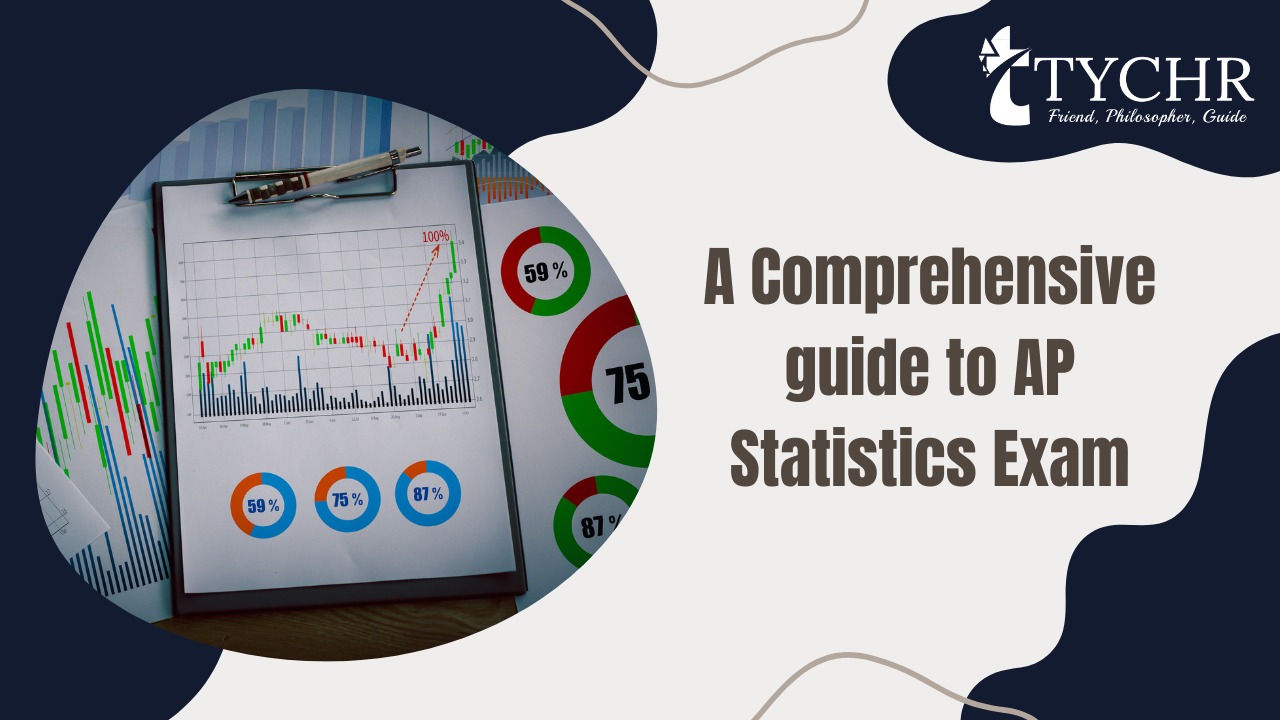Table of Contents
Why would you want to take AP Statistics?
In AP Statistics, the study of living things is thoroughly covered. With a quarter of the course devoted to lab-based experiential learning, the course places a strong emphasis on inquiry-based studies. Statistics and chemistry at the high school level are prerequisites. In order to receive college credit for difficult courses like AP Statistics, extensive research and planning are needed. Students who have good study habits, such as time management and attention to detail, will do well in this course. Here are some of your major options if you choose to study AP Statistics:
- Economics
- Industrial Engineering
- Computer Software Engineering
- Applied Mathematics
- Criminology
What you will learn:
When you finish an Advanced Placement Statistics course in high school, you are eligible to take the college-level AP Statistics Exams, which are given each May.
This is what you’ll be learning in Statistics:
| Unit Name | What you’ll learn |
| Exploring One-Variable Data | Variation in categorical and quantitative variables, Representing data using tables or graphs, Calculating and interpreting statistics, Describing and comparing distributions of data, The normal distribution |
| Exploring Two-Variable Data | Comparing representations of 2 categorical variables, Calculating statistics for 2 categorical variables, Representing bivariate quantitative data using scatter plots, Describing associations in bivariate data and interpreting correlation, Linear regression models, Residuals and residual plots, Departures from linearity |
| Collecting Data | Planning a study, Sampling methods, Sources of bias in sampling methods, Designing an experiment, Interpreting the results of an experiment |
| Probability, Random Variables, and Probability Distributions | Using simulation to estimate probabilities, Calculating the probability of a random event, Random variables and probability distributions, The binomial distribution, The geometric distribution |
| Sampling Distributions | Variation in statistics for samples collected from the same population, The central limit theorem, Biased and unbiased point estimates, Sampling distributions for sample proportions, Sampling distributions for sample means |
| Inference for Categorical Data: Proportions | Constructing and interpreting a confidence interval for a population proportion, Setting up and carrying out a test for a population proportion, Interpreting a p-value and justifying a claim about a population proportion, Type I and Type II errors in significance testing, Confidence intervals and tests for the difference of 2 proportions |
| Inference for Quantitative Data: Means | Constructing and interpreting a confidence interval for a population mean, Setting up and carrying out a test for a population mean, Interpreting a p-value and justifying a claim about a population mean, Confidence intervals and tests for the difference of 2 population means |
| Inference for Categorical Data: Chi-square | The chi-square test for goodness of fit, homogeneity, independence and Selecting an appropriate inference procedure for categorical data |
| Inference for Quantitative data: Slopes | Confidence intervals for the slope of a regression model, Setting up and carrying out a test for the slope of a regression model, Selecting an appropriate inference procedure |
In all honesty, the syllabus size is quite large compared to other AP exams but the principles of the topics are easy to comprehend and will become easy to apply.
This is what you can expect in the exam:
The AP Statistics exam overall is 3 hours long. It’s split into two sections – Multiple Choice, with a duration of 1 hour 30 minutes and Free Response, with a duration of 1 hour 30 minutes. The AP Statistics Exam will assess your knowledge of the mathematical ideas presented in the course units, as well as your aptitude for using statistical techniques and calculating probability. A graphing calculator with statistics features is required for the exam.
| Section | Time Duration | About the questions |
| Multiple Choice (50%) | 1 hour 30 minutes | This section has 40 questions both individual and in sets. The set of questions assess your understanding of content from all 9 units and your ability to apply all 4 course skills.
|
| Free Response (50%) | 1 hour 30 minutes | The free-response section includes six questions – 5 questions and one investigative task with written answers. It is split in 2 parts; Part A that focuses on collecting data, exploring data, probability and sampling distribution, inference and skill categories and Part B that focuses on an investigative task that assess multiple skill categories that ask you to apply your statistical skills to new contexts. |
Each subject or unit carries a specific weight. Due to the uneven distribution, the exam may have more questions from one area than the other. The College Board’s suggested order for the nine units is shown below, along with information on how much weight each unit will receive on the AP Statistics exam:
| Unit Name | Percentage weightage in Examination |
| Exploring One-Variable Data | 15% – 23% |
| Exploring Two-Variable Data | 5% – 7% |
| Collecting Data | 12% – 15% |
| Probability, Random Variables, and Probability Distributions | 10% – 20% |
| Sampling Distributions | 7% – 12% |
| Inference for Categorical Data: Proportions | 12% – 15% |
| Inference for Quantitative Data: Means | 10% – 18% |
| Inference for Categorical Data: Chi-square | 2% – 5% |
| Inference for Quantitative data: Slopes | 2% – 5% |
You cannot skip through a chapter because each topic has a different weighting. Before the exam, make sure you review and thoroughly go over every topic because they could include challenging and crucial questions on the side topics of each chapter, and if you don’t cover everything on the syllabus, you might wind up paying the price. Since the questions are widespread across the units (one question focused on one unit), you shouldn’t fall short on your preparation for any of the 9 units. Therefore, split your time evenly and study the important concepts in each of the units. A suggestion would be to practice questions more to get the hang of how they will be asked in the exam.

Grading and the Stats of the Previous Exam Session:
On a scale of 1 to 5, with 5 being the highest possible result, AP exams are graded. Colleges normally require a 4 or 5, though some would also take a 3, for AP Statistics exams if you want college credit. It’s commonly known that AP Statistics is notoriously extensive and difficult. Nevertheless, earning a respectable mark is not impossible. To find out what percentage of students received a 1–5 score, see the table below.
| Score | Percentage of students that scored |
| 5 | 14.8% |
| 4 | 22.2% |
| 3 | 23.4% |
| 2 | 16.5% |
| 1 | 23.1% |
What is the pass rate for AP Statistics?
One measure of an AP class’s difficulty is the proportion of students who pass the exam. AP exam scores vary from 1 to 5, with a 3 being regarded as a passing mark in accordance with all other AP subjects. By comparing the AP exam pass rate for AP Statistics to the overall average, you can get an idea of how difficult the exam is for students. The pass and perfect score rates for the Statistics test are contrasted with the average of the other AP subjects in the table below.
| AP Exam | Pass Rate (3 or higher) | Perfect Score (a 5) |
| AP Statistics | 60% | 14.8% |
| Other AP classes | 71.13% | 19.57% |
The fact that AP Statistics has a lower 5-score rate indicates that more students who enroll in the course have difficulty grasping the material. Due to the lower prerequisites for the programme, many students that enroll in AP Statistics likely have less of a mathematical background and may not fully comprehend the more complex ideas. However, depending on the course materials, the teachers, and other factors, students’ grades and opinions of the class can differ dramatically. Therefore, in order to understand more about the courses and assess their own strengths and shortcomings, students should speak with their teachers, upperclassmen, and peers before making a choice.
How to prepare for the exam?
To boil it down, here are a few ways that you can prepare for the exam:
- Although using a test prep book is entirely optional, many AP students do it because it contains practice questions (both multiple choice and free response) and examinations specific to each area be it plant Statistics or human physiology. It is quite helpful because it includes both the kinds of questions that will appear on the test and some questions that are repeated throughout several exams.
- One of the best ways to remember definitions and how to use formulae is by creating flash cards or keeping a formula sheet. These are a quick and simple approach to review material and refresh your memory of what you need to remember for the exam. Every component of a cell and every organ in the body have a variety of meanings according to AP Statistics. You’ll always have the necessary amount of cards on hand!
- Practice tests. These are accessible online and in test preparation books. A good reflection of what you should do on the exam will come from taking sample exams, which will give you an idea of how questions are constructed in the free response part and show you how long they might take to respond.
- Make a study plan. It’s imperative that you have access to something that has all the information about each topic in the subject, whether it be printouts from your teacher, from the internet, textbooks that have all the information and necessary points about a topic, or something else entirely. This is to make sure you don’t overlook any important information or tricky questions during the exam.
Here are a few tips you can keep in mind during the exam:
- Time management is key. Since there is an investigative task that assesses multiple skills, you need to make sure to do two things here. See the level of difficulty and manage your time appropriately with the rest of the 5 questions. You should give this task a good amount of time.
- Read the question carefully. Use the questions with study and discretion. Make careful to read the question again if you don’t understand it, and attempt to go over your answers again. Answer all of the questions where you are confident you can get a perfect score before attempting the remaining ones.
- Even if the initial sub division is incorrect, keep trying. Many open-ended questions include many sections that each need to be answered separately (for example, parts a, b, c, and d). You should attempt to solve each part because credit is awarded for each independently. For instance, you might receive no points for answering question a but full points for answering question b, c, or d.If the latter response is required for the answer to an earlier section of the question, you might still be able to receive full credit for the earlier response, even if it is incorrect.
That concludes our discussion on AP Statistics and exam expectations. If you adhere to the advice above and study diligently for the tests, you won’t struggle throughout the test and are likely to receive a 4 or 5.








